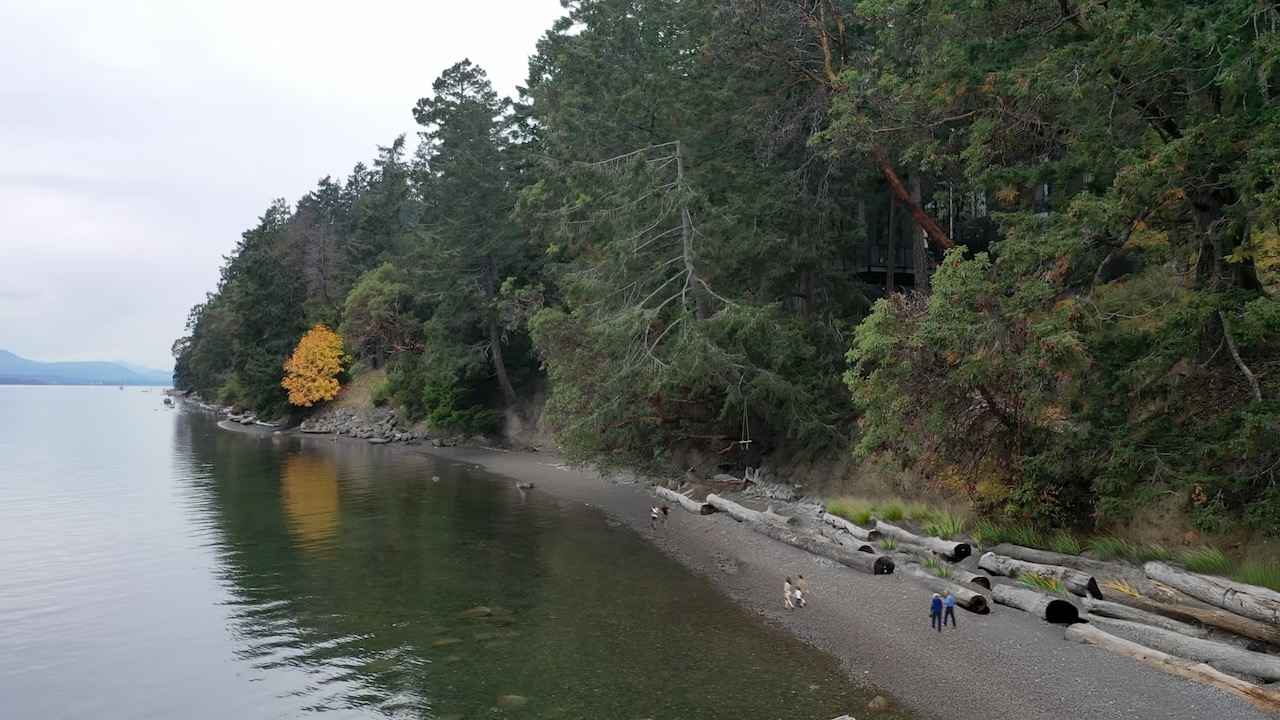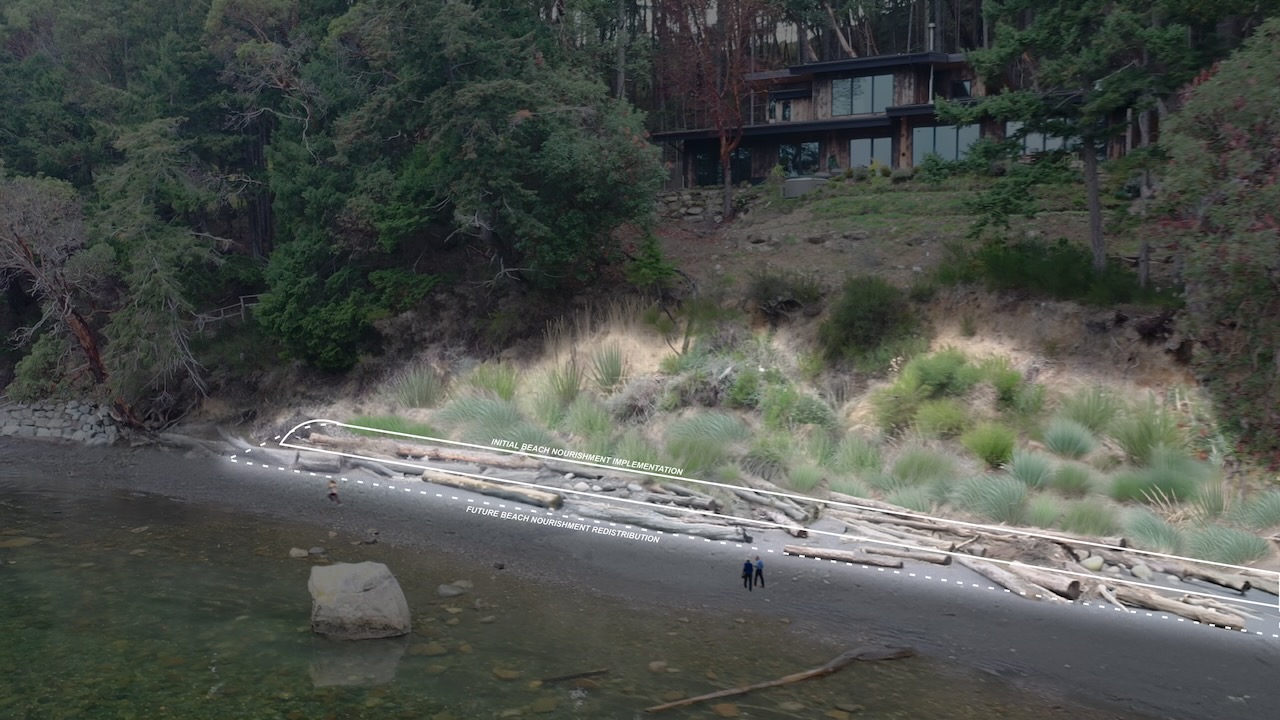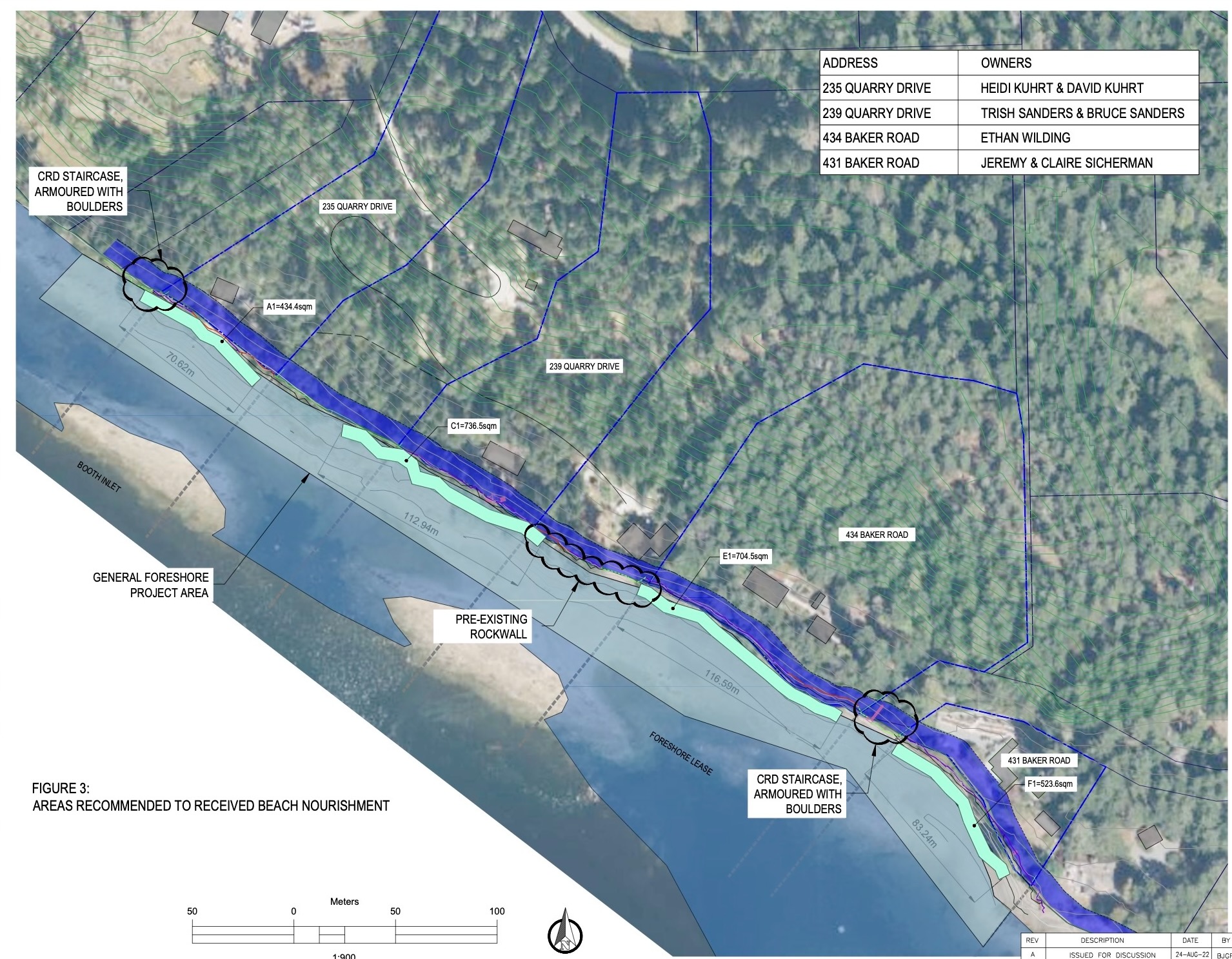Baker Beach Slope and Shoreline Protection Project
Overview: Baker Beach has seen an alarming increase of erosion due to intensified king tides and winter storms over the past few years. As local residents, we are working to mitigate this environmental damage to safeguard the beach’s slope, shoreline, and surrounding properties. Protecting this area is essential not only for maintaining the landscape but also for preserving critical habitats for marine species and wildlife (DFO, 2024). The trees along the shore, vital to the stability of the slope, are home to eagles and bats whose ecosystems are directly threatened by further erosion. Doing nothing risks losing not only land and vegetation but also these essential habitats—something that anyone who walks the beach can see is worth protecting.
We hope this website answers some concerns that we have seen on social media, news paper articles and a petition that is circulating. Please review this information, and then submit comments if you have any questions – we welcome your feedback.
Purpose of Project: Stabilize the slope and shoreline along Baker Beach. The stabilization methods are nature-based, including vegetation enhancement and bioengineering, beach nourishment, and wave-energy dissipating non-uniform rock clusters to supplement the natural rock clusters on the beach.
Does this project restrict beach access? Absolutely not. No access will be affected, and the beach will always be accessible.
Will this damage the sensitive Eel Grass areas and The Midshipmen Spawning Habitat? To address this concern directly we hired a diver to collect samples of sediment around the eel grass beds. The purpose of this exercise is to demonstrate that gravels from the slopes aren’t migrating to eel grass beds, so if additional material was added there, it shouldn’t be expected to mobilize there either. As demonstrated by the video below the size of the sediments found in the eelgrass is not the same as the ones by the areas where additional material will be added.
- Construction will be completed during periods of low tide (work in the dry).
- The works will be overseen by an Environmental Monitor (EM).
- Enhancement of backshore vegetation through planting of native species, particularly overhanging species such as Oceanspray.
- Suitable substrate for forage fish spawning in the upper reaches of the beach profile will be applied.
- Borrowed substrate with native sediments within the project area will be matched (mimic natural conditions).
- We will maintain the current natural beach slope to the extent possible.
- We will execute beach nourishment activities when birds or other mobile organisms are the least active.
- We will avoid mapped suitable spawning forage fish habitat and ensure that the timing of project works does not interfere with forage fish spawning.
- We will remove invasive species along the backshore and re-plant with native species.
Why not build a rock-wall to mitigate erosion from rising sea levels? The province is opposed to rock-walls for aesthetic and environmental reasons. Instead, we are using a science-based approach that aims to “preserve or restore physical processes such as the natural actions of water and sediment movement that maintain healthy shorelines. Maintain or enhance habitat function and diversity along the shoreline by making shorelines more secure against erosion and flooding. And prevent or reduce pollutants entering the aquatic environment.” We have worked with professional biologists and geo-tech engineers to develop this nature-based solution that puts equal focus on mitigating slope erosion from above by rejuvenating it with native plants, and shoreline protection from below with an intermittent nature-based shallow berm that mimics the naturally occurring substrate.
Project renderings: The images below are renderings of what the beach will look like if our shoreline protection project is implemented.


How does our project imitate the natural shoreline? This approach uses several methods to recreate natural processes. Beach nourishment, for example, mimics sediment deposits that typically result from landslides, bringing coarse sediment to the backshore, foreshore, and low-tide areas. By placing sediment in a mound shape, the initial setup looks like a natural landslip, allowing waves and currents to naturally redistribute materials along the shore.
The design prioritizes using clean pebbles and coarse sediment that resemble what would naturally appear after a landslide. Non-uniform clusters of rocks are also strategically placed along the foreshore, mimicking the existing boulders that are already present. These clusters help absorb wave energy and contribute to shoreline stability.
There will be no large trucks on the beach. We will either bring the material in from on top or by barge and distribute the material by hand and if needed with a small machine that uses vegetable oil. In the backshore and foreshore areas, we will encourage the growth of salt-tolerant plants through careful planting. Over time, salt-tolerant grasses, sedges, and low shrubs may naturally develop on stable sediment deposits, even through stormy weather. Native salt-tolerant species are being considered for planting to help stabilize the sediment and make the shoreline more resilient. We have been working with a biologist who has catalogued the plants that naturally occur along this shoreline.
What about vegetation that may grow along the shore? In the backshore and foreshore areas, we expect to encourage the growth of salt-tolerant plants through bioengineering techniques and careful planting. Over time, salt-tolerant grasses, sedges, and low shrubs may naturally develop on stable sediment deposits, even through stormy weather. Native salt-tolerant species are being considered for planting to help stabilize the sediment and make the shoreline more resilient.
Stakeholder Consultation: We have reached out to 13 Indigenous communities who have hereditary rights in the area for their comments and consideration. We are continuing to follow up with the groups, and in particular the Penelakut who have a foreshore tenure along the shores for claming and oyster farming. First Nations engagement is critical to us too and is a requirement as part of this process, via the Heritage Act permit process, along with the Crown Land Tenure Process.
Why Now? Climate change is driving more severe environmental impacts, including erosion along our shorelines. With this project, we aim to protect the slope, shoreline, vegetation, and properties along Baker Beach. By taking action now, we can help preserve the natural beauty and stability of the area against climate-driven changes before it's too late. We hope that others on the island experiencing similar shoreline loss because of climate change can use our project as an example.
We continue to be open to dialogue and invite anyone with comments to reach out.
Resources
- Green Shoring
- Living Shorelines Provide Nature-Based Approach to Coastal Protection | NOAA Fisheries
- Living Shorelines ~ Restore America's Estuaries
- Geohazard Assessment of Lands: Engineering Report for Coastal Erosion Mitigation (TRE Environmental Services)
- Environmental Assessment (Corvidae) Part 1
- Environmental Assessment (Corvidae) Part 2
- Crown Land Application Management Plan
- Erosion Mitigation, Booth Inlet, Vesuvius – Implementation of Measures to Avoid and Mitigate the Potential for Prohibited Effects to Fish and Fish Habitat
